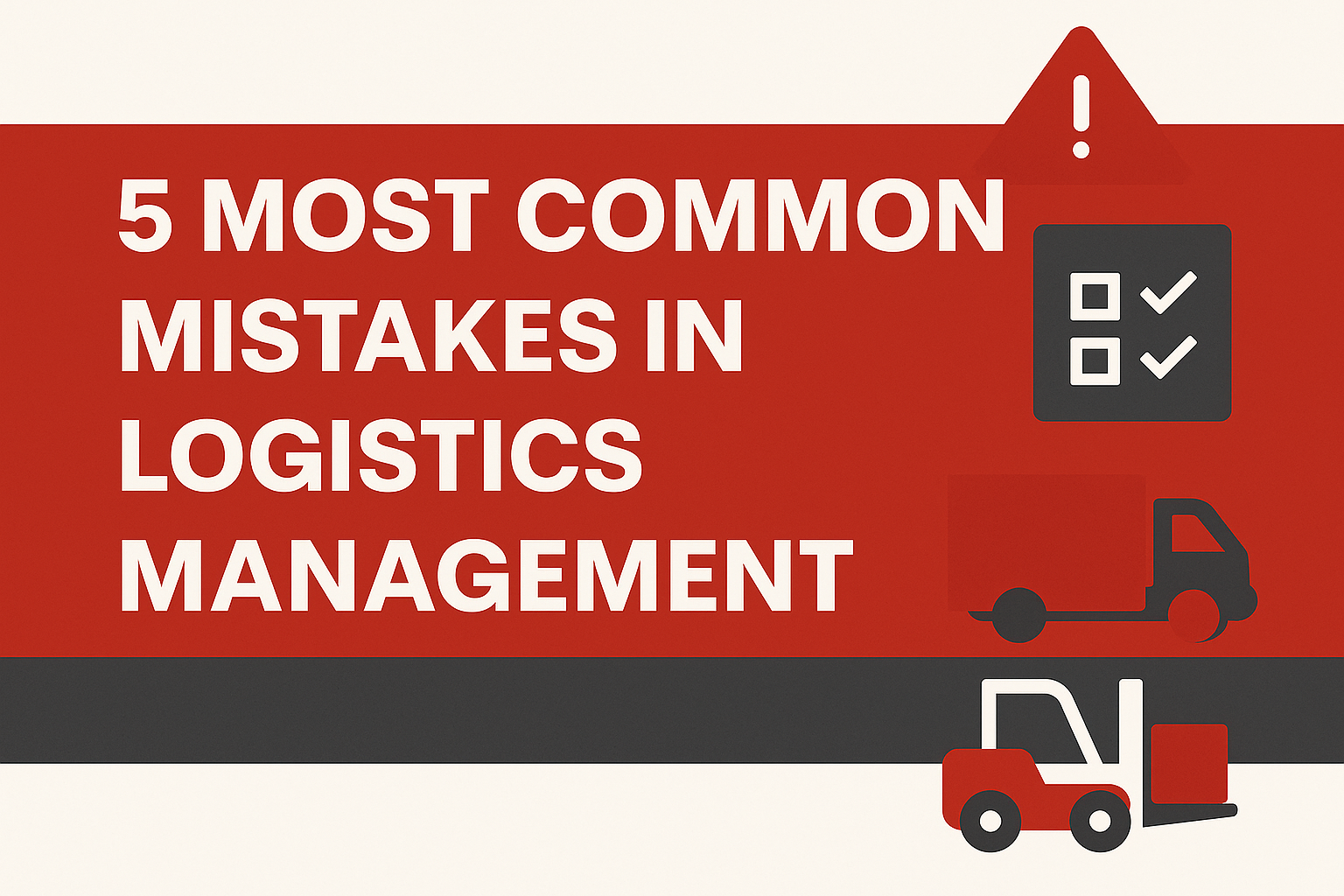Efficient Logistics Is the Backbone of Every Modern Business System
It connects all functional units – from procurement and production, to warehousing and final delivery to the end customer. However, logistics management often becomes a challenge, especially for small and medium-sized enterprises that are growing rapidly but lack sufficient resources, knowledge, or structure.
Below, we highlight five key mistakes commonly seen in logistics management – along with practical tips on how to avoid them and improve your company’s processes.
1. Inaccurate Inventory Planning
The Mistake:
Poor inventory management can lead to two major issues:
- Excess stock, which increases storage costs, becomes obsolete, or spoils
- Stock shortages, which result in delivery delays and dissatisfied customers
The Solution:
Implementing real-time inventory tracking systems (e.g., inventory management software) allows for better control. Combining historical consumption data with future demand forecasting significantly improves accuracy and reduces costs.
2. Poor Communication Within the Supply Chain
The Mistake:
When departments (procurement, warehouse, sales) don’t communicate clearly and promptly, it leads to order errors, delays, and poor coordination.
The Solution:
- Establish clear internal procedures and responsibilities
- Use digital tools (CRM, ERP) to share data and delivery statuses
- Hold regular coordination meetings
Transparent communication reduces complaints, speeds up work processes, and improves satisfaction for both customers and employees.
3. Lack of Cost Awareness in Logistics
The Mistake:
Many companies have no clear understanding of how much logistics actually costs them – as expenses are often hidden across different budget categories.
The Solution:
- Conduct detailed cost analysis by category
- Include logistics in strategic budget planning
- Optimize routes, consolidate shipments, or negotiate better terms with transport partners
📉 Result: After detailed analysis, such optimization can reduce up to 18% of total logistics costs, often caused by duplicate shipments and inefficient route planning.
4. Ignoring Technology
The Mistake:
Relying on outdated methods, manual records, and Excel spreadsheets leads to frequent errors and low efficiency.
The Solution: Digitalization is key:
- WMS (Warehouse Management System)
- ERP (Enterprise Resource Planning)
- RFID, barcode systems, GPS for shipment tracking
💡 Bonus tip: Automation and system integration enable better decision-making and greater control of the entire supply chain.
5. Inadequate Staff Training
The Mistake:
Logistics staff are often unfamiliar with the latest standards, regulations, or efficient operational practices.
The Solution:
- Implement regular training and upskilling
- Provide certification for specific areas
- Develop internal knowledge-sharing and mentorship systems
📚 Value of education: Investing in employee knowledge directly impacts operational efficiency, accuracy, and safety.




